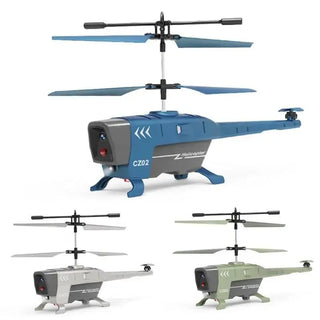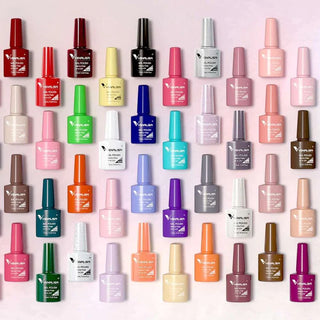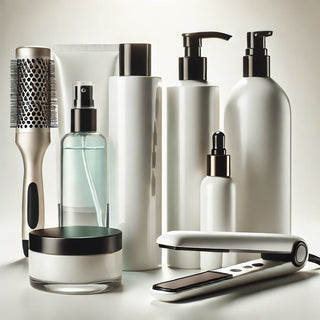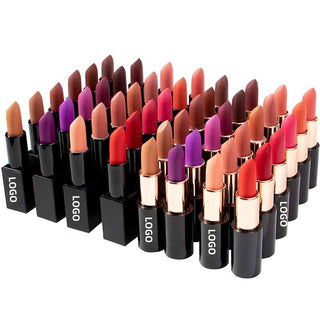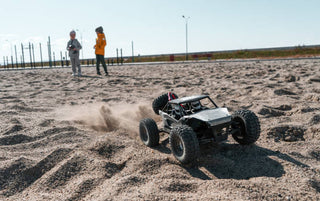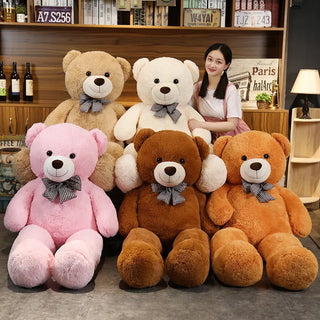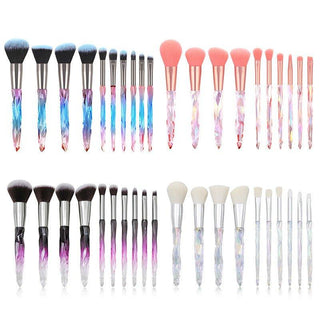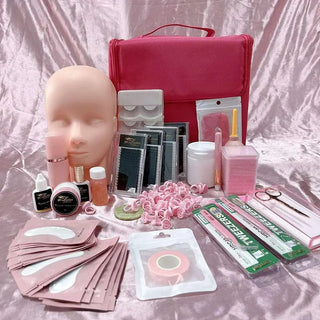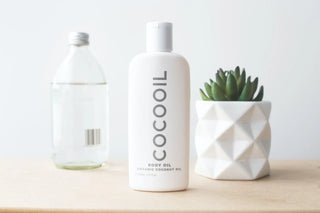When you have to leave your dog home alone, it can be tough knowing they might be bored or anxious. Finding the right toys for dogs when home alone is key to keeping them happy and occupied. These aren't just about passing the time; they're about providing mental stimulation and preventing those destructive behaviors that come from a lack of activity. Let's look at some great options that can make solo time a lot more fun for your furry friend.
Key Takeaways
- Interactive puzzle toys and treat dispensers are great for solo play, offering mental challenges and rewards.
- Rotating toys can keep your dog engaged by providing novelty and preventing boredom.
- Scent work games, like 'which hand' or box searches, tap into your dog's natural instincts and provide great mental exercise.
- Simple games like tug-of-war or hide-and-seek can be surprisingly effective for tiring out your dog, even indoors.
- While toys are helpful, remember that training and interaction are also important for your dog's overall well-being.
1. Kong Wobbler

The Kong Wobbler is a fantastic option for keeping your dog occupied when you're not around. It looks a lot like a bigger version of the classic Kong toy, but this one has a weighted bottom, which means it always rights itself. You fill it up with kibble or treats through a twist-off top, and there's a small opening where the goodies come out randomly as your dog nudges it. It's pretty unpredictable, so even a smart dog will have a good time figuring it out.
This toy is great because it can double as a slow feeder during meal times, making your dog work for their food. It comes in a couple of sizes, so you can pick one that fits your dog's weight. Just a heads-up, though: it can get a bit noisy when it bounces off walls or slides across hard floors, so maybe keep it away from the living room if you have thin walls.
Here's a quick rundown:
- How it works: Dog nudges the toy, treats fall out.
- Sizes: Available in small (for dogs 25 lbs and under) and large.
- Cleaning: It's dishwasher safe, which is a big plus.
While it's super durable, some really strong chewers might be able to gnaw off pieces over time. It's best for dogs who are more interested in getting treats out than just chewing the toy itself.
2. West Paw Toppl
The West Paw Toppl is a really neat treat-dispensing toy that can keep your dog busy for a good while. It’s shaped like a bowl with some ridges inside, which helps hold treats or kibble in place. What makes it stand out is its versatility – you can use it with dry treats, or you can fill it with wet food, yogurt, or even kibble soaked in water, then freeze it for a longer-lasting challenge. This is fantastic for dogs who tend to eat their meals too quickly, as it forces them to slow down and work for their food.
It comes in a few different sizes, so you can pick one that suits your dog. Plus, it’s made from a tough material called Zogoflex, which is pretty durable. When it’s time to clean up, you can just toss it in the dishwasher, which is a big plus.
How to Use the West Paw Toppl:
- Simple Treat Dispenser: Just put some dry kibble or small treats inside and let your dog figure out how to get them out.
- Frozen Treat Challenge: Fill it with wet food, peanut butter, yogurt, or soaked kibble. Freeze it overnight for a super engaging activity that can last for ages.
- Nested Difficulty: For an extra challenge, you can nest a smaller Toppl upside down inside a larger one. This makes it harder for your dog to get the treats out, extending playtime.
It’s important to supervise your dog when they’re using the Toppl, especially if they’re a strong chewer. While it’s tough, some dogs might be able to gnaw off pieces, so keeping an eye on them is always a good idea.
Dimensions:
| Size | Height | Width | Depth |
|---|---|---|---|
| Small | 5.51 in | 7.09 in | 3.15 in |
| Large | 6.69 in | 8.27 in | 4.33 in |
3. Nina Ottosson Puzzle Game
Nina Ottosson puzzle games are fantastic for keeping your dog mentally stimulated when you're not around. These aren't just simple treat dispensers; they're designed to make your dog think and problem-solve to get their reward. Think of them as brain teasers for your pup.
The core idea is to hide treats or kibble within compartments that your dog has to figure out how to open. This could involve sliding covers, lifting flaps, or spinning parts. It’s a great way to tap into their natural foraging instincts and keep them busy.
Here’s a general idea of how they work:
- Start Simple: Begin by just placing treats in the more obvious grooves or holes.
- Increase Difficulty: Once your dog gets the hang of it, start covering the treats with the puzzle's moving parts, like sliders or flippers.
- Supervise Initially: Watch your dog to see how they approach the puzzle. Some dogs might try to force it, while others will be more methodical.
These toys are generally made from durable materials, often a mix of plastic and wood composite, and many are dishwasher safe, which is a big plus for cleaning. They come in various difficulty levels, so you can find one that’s just right for your dog’s experience and intelligence. If your dog is a super-fast learner, you might need to move up to a more challenging level to keep them engaged. It’s a good idea to have a few different types of these puzzles on hand to offer variety. You can find a wide selection of these engaging toys at places that sell dog puzzle toys.
These puzzles are excellent for building confidence and focus in dogs. They provide a sense of accomplishment when your dog successfully figures out how to get the treat, which can be very rewarding for them and help reduce boredom-related behaviors.
4. Treat Dispensing Toys
Treat-dispensing toys are fantastic for keeping your dog engaged when you're not around. These toys work by requiring your dog to figure out how to get treats or kibble out, which taps into their natural foraging instincts. It's like a puzzle and a reward all rolled into one!
The real magic of these toys is that they turn a simple snack into a mentally stimulating activity. Instead of just gobbling down their food, your dog has to work for it, which can significantly reduce boredom and prevent destructive behaviors that often stem from a lack of mental stimulation. Plus, the act of licking and manipulating the toy can be quite calming for many dogs.
Here are a few things to consider when choosing a treat-dispensing toy:
- Difficulty Level: Some toys are super simple, while others offer a real challenge. Start with something easier and work your way up as your dog gets better at solving the puzzle.
- Durability: If you have a dog who likes to chew, you'll want a tougher toy made from sturdy materials. Some are made of hard rubber, while others might be plastic.
- Ease of Cleaning: Let's be honest, treats can get messy. Look for toys that are easy to wash, ideally dishwasher-safe, so you don't dread cleaning them up.
- Type of Treat: You can often use your dog's regular kibble, but you can also smear in things like peanut butter, yogurt, or wet food to make it extra enticing. Freezing the treats inside can make the toy last even longer.
These toys are great for more than just keeping your dog busy. They can also be used to slow down fast eaters or to make mealtime a more engaging experience. It's a simple way to add a bit of enrichment to your dog's daily routine.
5. Puzzle Toys
Puzzle toys are fantastic for keeping your dog's mind sharp and engaged, especially when you're not around to play fetch. These aren't just simple chew toys; they're designed to make your dog think. They often involve hiding treats or kibble inside, and your dog has to figure out how to get them out. This process taps into their natural instincts to forage and problem-solve.
Think of them as brain games for your dog. They can really help with boredom, which often leads to less-than-ideal behaviors like chewing up your favorite shoes. By giving your dog a mental challenge, you're providing a healthy outlet for their energy and intelligence. Plus, it's pretty rewarding to watch them figure things out!
Here are a few things to consider when picking out a puzzle toy:
- Difficulty Level: Start with something easier if your dog is new to these types of toys. You can always move up to more complex ones later.
- Durability: Make sure the toy can stand up to your dog's chewing habits. Some are made of tougher materials than others.
- Ease of Cleaning: You'll be putting treats in there, so a toy that's easy to wash is a big plus.
These toys are great for dogs of all ages, from puppies learning new skills to older dogs who need a mental boost. They can even help slow down dogs who tend to eat their meals too quickly, turning mealtime into a more engaging activity.
6. Snuffle Balls
Snuffle balls are a fantastic way to keep your dog engaged and mentally stimulated, especially when you can't be there to play. These toys are essentially fabric balls with lots of little pockets or folds where you can hide treats or kibble. Your dog's natural instinct to sniff and forage kicks in, and they have to work to get the goodies out. It's like a treasure hunt for them!
The real benefit here is that it taps into your dog's natural scenting abilities, which is a really satisfying activity for them. It can help tire them out mentally, which is just as important as physical exercise. Plus, it turns mealtime into a fun game, slowing down fast eaters and making them think a bit more about their food.
When choosing a snuffle ball, consider a few things:
- Durability: Some are made of softer fabrics that might not hold up to a determined chewer. Look for sturdy stitching and materials if your dog is a bit rough with their toys.
- Treat Hiding Spots: The more nooks and crannies, the longer it will take your dog to find all the treats, offering more extended engagement.
- Washability: Treats can get a bit messy, so a toy that's easy to clean is a big plus. Some are machine washable, while others might need a good soak or spot cleaning.
Using a snuffle ball is a great way to provide enrichment without a lot of fuss. You can start simple by just tucking a few pieces of kibble into the folds, and as your dog gets the hang of it, you can make it more challenging by hiding treats deeper or using smaller pieces that are harder to get. It’s a simple yet effective tool for keeping their minds busy.
7. Muffin Tin Puzzles
Muffin tin puzzles are a fantastic DIY option for keeping your dog mentally stimulated when you're not around. They're super simple to set up and can be customized with different treats and toys to keep things interesting. Basically, you grab a standard muffin tin and some tennis balls or other small toys that your dog can't easily swallow. You then hide treats or pieces of kibble under the balls in some of the muffin cups. The goal is for your dog to figure out how to move the balls to get to the hidden goodies. It’s a great way to encourage natural foraging behaviors and problem-solving skills.
Here’s a quick rundown on how to put one together:
- Get a muffin tin: A 12-cup tin is pretty standard, but you can use smaller ones too.
- Grab some balls: Tennis balls work well, but you could also use small stuffed toys or even sturdy plastic cups if your dog isn't a big chewer.
- Hide the treats: Place a few high-value treats or some of your dog's kibble in about half of the muffin cups. Make sure the treats are small enough to fit easily.
- Cover them up: Place a ball or toy over each treat-filled cup. You can leave some cups empty to add an extra layer of challenge.
- Let your dog at it! Introduce the tin to your dog and let them sniff and investigate. They’ll quickly learn to nudge the balls out of the way to find the hidden treasures.
This is a really effective way to make mealtime or snack time a bit more engaging. It’s also a good way to gauge your dog’s problem-solving abilities. If they’re a natural, they might figure it out in minutes. If they’re new to puzzles, it might take them a little longer, which is perfectly fine. Just be sure to supervise initially, especially if your dog tends to chew on things, to make sure they don't ingest the balls or the tin itself.
8. Shell Game
This is a classic game that’s super easy to set up and can really get your dog thinking. It’s all about scent and deduction, which most dogs are naturally good at. You just need a few opaque cups or containers – think plastic cups, empty yogurt containers, or even small buckets. The goal is to hide a treat under one of them while your dog watches, then shuffle them around. Your dog’s job is to figure out which container has the hidden prize.
It’s a great way to engage their minds and noses. Start simple with just two cups. Show your dog the treat, place it under one cup, and then shuffle. If they sniff out the right one, give them the treat and lots of praise. As they get better, you can add more cups, making it trickier. The key is to make sure the shuffling isn't too fast or confusing, especially at first. You want them to succeed and build confidence.
Here’s a quick rundown on how to play:
- Preparation: Grab 3-4 identical, opaque cups or containers. Find a high-value treat your dog loves.
- The Setup: Let your dog see you place the treat under one of the cups.
- The Shuffle: Gently shuffle the cups around. You can start with a simple swap or a more complex pattern as your dog gets the hang of it.
- The Guess: Encourage your dog to sniff or paw at the cup they think has the treat.
- The Reward: If they pick the correct cup, reveal the treat and let them have it! If they pick the wrong one, no worries, just let them try again or shuffle them again.
This game is fantastic for mental stimulation and can help tire out your dog just as much as physical exercise. It taps into their natural foraging instincts, making it a really satisfying activity for them. Plus, it’s a fun way for you to interact and bond with your pup, even when you don’t have a lot of space or time for a big play session.
9. Box Search
This is a really simple yet effective way to engage your dog's natural foraging instincts. You just need a few cardboard boxes – old delivery boxes work perfectly – and some of your dog's favorite treats or kibble. The idea is to hide treats inside the boxes and let your dog sniff them out. It's like a treasure hunt for them!
Here’s how you can set it up:
- Gather your supplies: Collect a few empty cardboard boxes of varying sizes. You can even crumple up some plain paper or newspaper to put inside some of them to make the hiding a bit more challenging.
- Hide the treats: Place a few treats or pieces of kibble inside some of the boxes. Don't put treats in every single box; you want to make them work for it!
- Introduce the game: Present the boxes to your dog. You can arrange them in a line or a cluster. Let your dog explore and sniff around. When they find a box with a treat, they'll likely nudge or paw at it to get the reward.
- Encourage them: If your dog seems hesitant, you can give them a little nudge towards a box or even open one slightly to show them what's inside. Lots of praise when they figure it out is key!
This game is great because it's adaptable. You can start with just a couple of boxes and gradually increase the number as your dog gets better. It’s also a fantastic way to use up those leftover treats you have lying around. Plus, it’s a low-cost activity that provides significant mental stimulation, which is just as important as physical exercise for a happy, well-behaved dog.
10. Tug of War

Tug-of-war might seem like a game that requires two people, but you can actually adapt it for solo play. The key is to use toys that are designed for this kind of interaction. Think about ropes or sturdy plush toys with internal ropes. When you're not around, your dog can still engage with these toys by themselves, pulling and shaking them to satisfy that natural urge to tug. It's a great way for them to burn off energy and keep their minds busy.
These toys mimic the satisfaction of a good tug-of-war session without needing a playmate.
Here’s how it works:
- Choose the Right Toy: Look for toys with a strong rope core or those specifically marketed as tug toys. Durability is key here, as your dog will be putting a lot of force on them.
- Introduce the Toy: Show your dog the toy and initiate a brief tug-of-war session with them. This helps them understand how the toy is meant to be used.
- Solo Play: Leave the toy out for them when you leave. They can grab it, shake it, and pull on it to their heart's content.
While direct human-dog tug-of-war is fantastic for bonding, leaving appropriate tug toys available allows your dog to engage in this instinctual behavior independently. It provides a physical and mental outlet, helping to reduce boredom and potential anxiety when they're home alone.
In the section "10. Tug of War," we explore the push and pull of different ideas. It's like a friendly competition where everyone tries their best. Want to see how we handle these challenges? Visit our website to learn more about our approach and discover exciting products that can help you win your own tug of war. We have great deals on beauty items, kitchen gadgets, pet supplies, and more!
Wrapping Up: A Happier, Less Bored Pup
So, leaving your dog alone doesn't have to mean a day of boredom and maybe some chewed-up shoes. By picking out the right toys, you can give your furry friend plenty to do. Remember, it's not just about the toys themselves, but also about knowing what your dog likes and maybe even joining in on the fun when you can. A little bit of playtime or a good puzzle toy can make a big difference in keeping your dog content and well-behaved while you're out. It’s all about finding that balance to keep them happy and healthy.
Frequently Asked Questions
What kind of toys will keep a dog occupied when they're home alone?
Toys that make your dog think and work for treats are great for keeping them busy. Things like treat-dispensing toys, puzzle feeders, or even DIY boxes filled with treats and paper rolls your dog can shred can work well. The key is to find what motivates your dog, whether it's a specific type of treat or a challenging game.
What dog toys will help prevent boredom?
While toys can help, remember that dogs also crave interaction with you. Learning how to play with your dog in ways that mentally stimulate them is important. Sometimes, a simple game of tug-of-war or a durable chew toy like a Benebone can make them happiest.
Can toys make my dog smarter?
Yes, toys can definitely boost your dog's curiosity and help them use their brain more. However, learning and training are also super important for a dog's development. Practicing basic commands and teaching them how to navigate the human world will help them the most.
How do I know which toys will keep my dog interested?
It really depends on your dog! Some dogs are super motivated by food and will happily work for treats hidden in puzzle toys. Others might prefer a toy they can chew on or a game that involves physical activity. Getting to know what your dog loves is key.
How can I make sure my dog doesn't get tired of their toys?
You can keep toys exciting by rotating them. Put some away in a cupboard for a few days, then bring them back out. Dogs love novelty, so this can make old toys seem brand new and more engaging.
Can food puzzle toys help my dog eat slower?
Yes, many puzzle toys are designed to dispense food or treats slowly. This is not only healthier for your dog's digestion, preventing issues like gulping or bloating, but it also makes mealtime a fun challenge.

